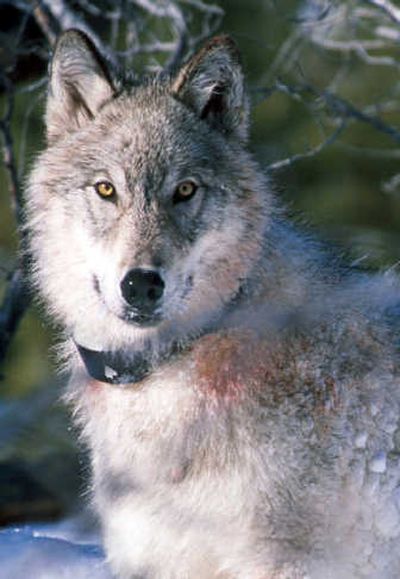Rule targets wolves that prey on game

BILLINGS – A new federal rule would allow state game agencies to kill endangered gray wolves that prey on wildlife in the Northern Rockies.
An estimated 1,545 wolves in Idaho, Wyoming and Montana are scheduled to come off the endangered species list in coming weeks, which would allow public hunting of the predators for the first time in decades.
The rule released Thursday is a separate action that would give the three states more latitude to kill wolves even if their removal from the endangered list is delayed.
Opposition to the rule, which could go into effect in late February, came within hours of Thursday’s announcement. Environmental and animal rights groups characterized the federal proposal as cover for states eager to kill as many wolves as possible.
An attorney for legal group Earthjustice, in Bozeman, pledged to file a court challenge as soon as the rule is published in the Federal Register next week.
The rule would empower state wildlife agents to kill packs of wolves if they can prove the animals are having a “major impact” on big game herds such as elk, deer or moose.
It also would allow hunting guides and others to kill wolves caught harassing dogs or stock animals on public land.
State and federal officials said the number of wolves killed as a result could number in the dozens.
But critics contend officials in Wyoming and Idaho – spurred on by anti-wolf livestock interests – are gearing up to kill hundreds of the animals. Those critics say that could knock down the animal’s population in the region by more than half, undermining a decade-long restoration effort that has cost more than $24 million.
“There’s just no biological justification for killing that many wolves,” said Suzanne Stone, of Defenders of Wildlife. “It’s politically driven.”
The rule was crafted to meet the demands of Wyoming lawmakers, who made it a condition of their acceptance of the federal plan to lift endangered species protections from wolves. Officials from the state said they wanted to have a way to deal with wolves if delisting is blocked in court.
The lead federal biologist for wolf recovery Thursday dismissed claims of an impending slaughter as unfounded.
“There’s still going to be a lot of wolves in a lot of places,” said Ed Bangs, of the U.S. Fish and Wildlife Service.
Any state-sponsored wolf removal program would have to be approved by Bangs’ agency. And with big game populations generally thriving in the region, Bangs said it would be difficult for the states to prove wolves were having a major impact except in a few cases.
Idaho officials already have a tentative plan to kill 40 to 50 wolves in the Clearwater River drainage in the northern part of the state, where elk numbers are down. And in Wyoming, officials have been developing similar plans to address troubled elk herds east and south of Yellowstone National Park. Those plans are not final, but Wyoming officials have said they could involve killing as few as 30 wolves.
Montana officials have said they do not plan to take advantage of the new rule. Rather, they say they will wait for the animal to be removed from the endangered list and then manage its numbers largely through public hunting.
The federal government says a minimum of 300 wolves in the Northern Rockies are needed for a lasting recovery. The rule released Thursday requires even more – a minimum of 200 per state.
Yet environmentalists contend that even if wolf numbers held at current levels, those levels are too low to ensure the long-term survival of the species. They say 2,000 to 5,000 wolves are needed to maintain a large enough gene pool and prevent inbreeding.